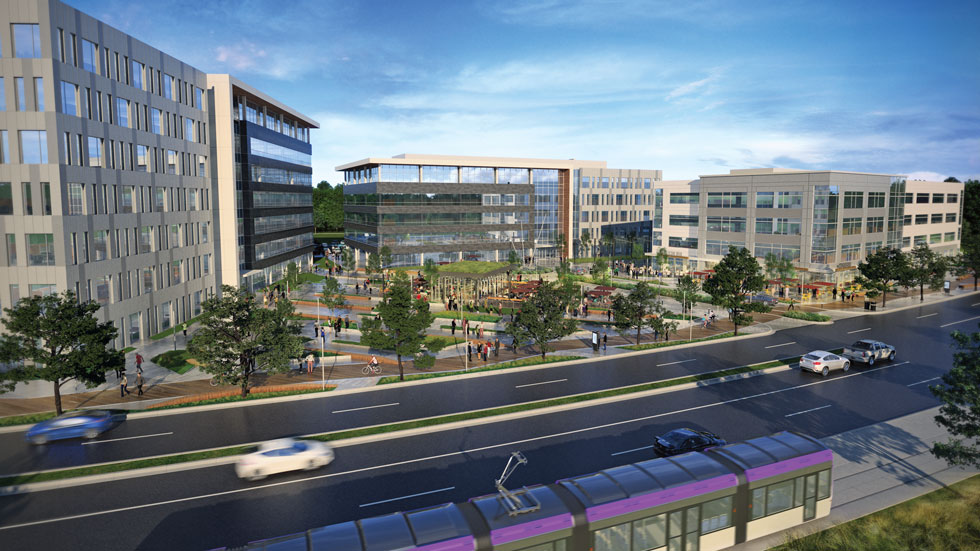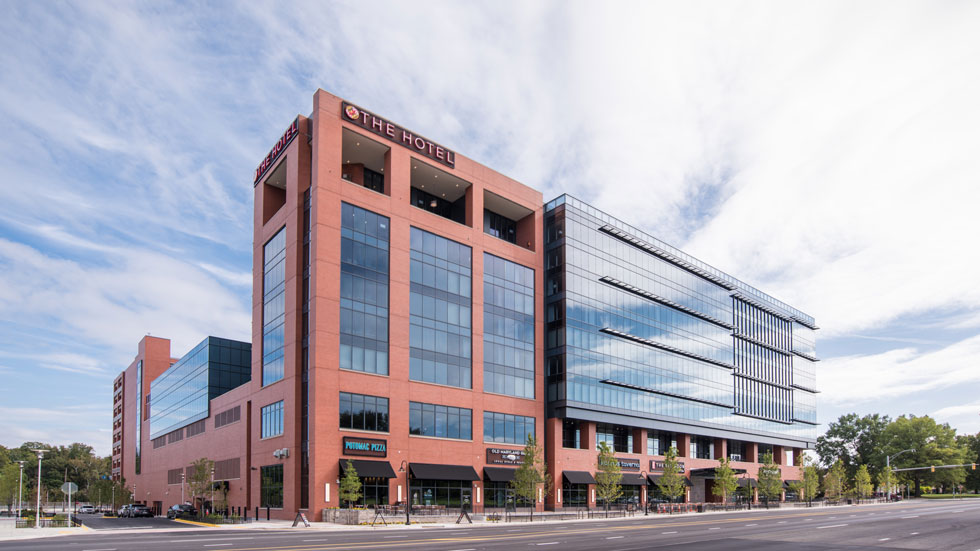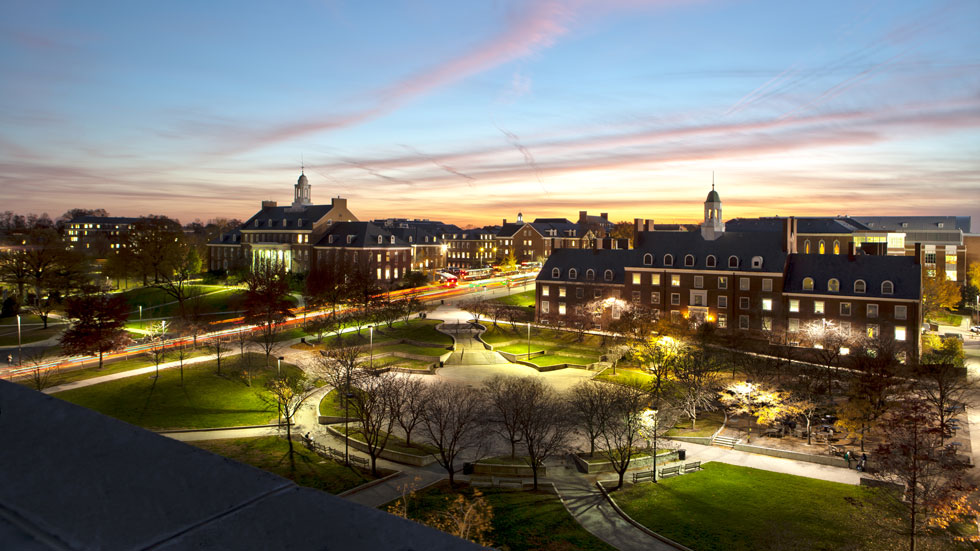Encompassing over 150 acres, the Discovery District in College Park, Maryland, embodies a long-running effort by the University of Maryland (UMD) to leverage its strength as a research institution by creating a vibrant and diversified mixed-use community built on innovation. As UMD’s largest private industry partner, Corporate Office Properties Trust (COPT) (NYSE: OFC) is fulfilling its role by developing mission critical office properties on roughly 60 acres.
Already home to dozens of research institutions, federal agency laboratories, technology companies, and other tenants in some 1.5 million square feet of real estate, the Discovery District is becoming an attractive destination for cutting-edge startup companies and expanding firms that want or need to locate along the influential Baltimore-Washington, D.C. corridor.
COPT, an office REIT based in Columbia, Maryland, recently completed construction of the 100,000-square-foot 4600 River Road, its fourth office property in the Discovery District.
All told, COPT has developed about 425,000 square feet of precast and glass office buildings in the Discovery District representing an investment of $97.6 million, and momentum is building.
“We’ve really seen an acceleration in activity in the Discovery District over the last few years as we’ve opened two new buildings and have had a lot of leasing success,” says Dean Lopez, senior vice president of development for COPT. “We have a very synergistic relationship with the university, and it aligns very well with our core mission as a company.”
In recent months, COPT secured three significant leases with new and existing tenants alike:
In anticipation of seeing its workforce grow to 228 employees from 100, cybersecurity firm Cybrary is moving from the REIT’s 5801 Research University Research Court building in College Park and expanding into a 28,000-square-foot headquarters space at 4600 River Road.
Catalyst Campus, a Colorado Springs, Colorado-based non-profit that connects academia, government, and technologists to bring new technology to the defense industry, is backfilling Cybrary’s former 10,000-square-foot space in COPT’s 5801 building as part of a new 27,000-square-foot lease.
Phishing and email security company INKY Technology Corporation (INKY) is tripling its footprint to 17,000 square feet in COPT’s 5825 University Research Court property.
The REIT’s latest round of development started in 2018. While three of its assets at Discovery District are fully occupied, the newest building is more than 50% spoken for and leases being negotiated will fill the balance, Lopez says. COPT’s first two buildings were each certified LEED Silver, and its third building achieved a LEED Gold certification. LEED Gold certification for its latest property is pending.
Creating Appeal
The company has room to develop nearly 1 million square feet of additional space, and executives see the Discovery District as an important part of its strategy to invest in locations that are anchored by, or are in proximity to, mission-critical, knowledge-based government agencies, defense and security companies, and information technology installations and institutions.
“As a science-oriented research and development community, the Discovery District appeals to defense tenants executing work in an academic environment and the talent they seek to recruit,” Lopez says. “The proximity of our office park to retail, restaurants, housing, hotel accomodation, and the university supports a live-learn-work-play—and recruit—ecosystem.”
The Discovery District was formally launched in early 2017 and is bordered roughly by Baltimore Avenue, UMD, the Anacostia River, and Maryland 410 highway. It represents a rebranding of M Square, the former name of the UMD-affiliated research park southeast of campus that began to take shape in the 1990s.
After M Square was officially established in 2006, COPT partnered with the university to bring together academic, government, and private resources to attract organizations focused on the environment, food safety, national security, technology, and other front-line sectors.
The venture aimed to build on the presence of a host of science and research-oriented firms, including the American Center for Physics, the U.S. Department of Agriculture Animal and Plant Inspection Services, the Food and Drug Administration’s Center for Food Safety and Applied Nutrition, and the National Oceanic and Atmospheric Administration’s Center for Weather and Climate Prediction, all of which are still operating in the park today.
While the effort had some success, it became clear that the research park initiative needed to broaden its scope and include amenities that would boost the area’s appeal. Too many alums and former students launching startups were leaving the area, says Ken Ulman, chief strategy officer of economic development for the University of Maryland College Park Foundation, a non-profit organized in 2000 to receive, invest in, and manage assets that support the university.
Wallace Loh, UMD’s president from 2010 to 2020, considered M Square a “20th Century Park.” He made it a priority to bring it up to date by encouraging a broader range of development to support the area. As a result, the Discovery District was born and became the focal point of a town/gown initiative to build a “Greater College Park,” spearheaded by the university, the city of College Park, and Maryland’s Prince George’s County.
“Greater College Park is an effort to create housing, grocery stores, coffee shops, hotels, restaurants, and music venues—all the amenities that make for great college towns and great places of innovation,” explains Ulman, who is also president of strategic consulting firm Margrave Strategies. “It’s a place for companies that grow out of the university’s labs, and it’s a place where those from outside the region will want to locate.”




